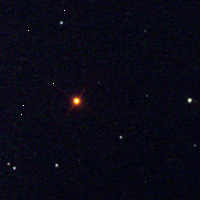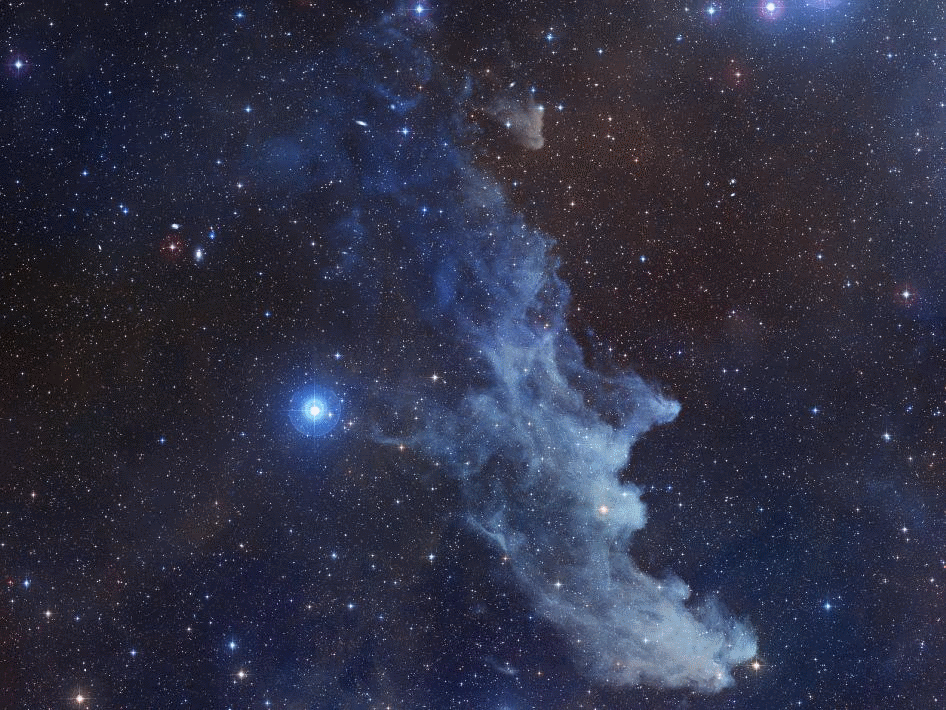
Make a New Year's resolution to stargaze in 2014! January kicks off the New Year with wonderful sights for backyard astronomers to enjoy with friends and family. Don't forget to bundle up and stay warm on clear evenings as you explore the sparkling night sky. Here are a few of our top picks for January stargazers:
Jupiter at Opposition - On January 5th Jupiter will be at opposition from the Sun, which means it is directly opposite from the Sun in the sky and will rise in the east as the Sun sets. Get ready to view and image the largest planet in the solar system! Any telescope will show the 4 Galilean Moons and the major cloud bands on a clear night, but you'll need about a 90mm diameter or larger telescope for serious viewing. Bigger scopes show more detail during periods of steady skies and good "seeing". The Orion Jupiter Observation Eyepiece Filter makes the Great Red Spot and the major equatorial cloud bands easier to see. If you have a telescope with a motor drive system, Orion has options starting at less than $100 to image the mighty gas giant planet - see our StarShoot USB Eyepiece Camera II or the versatile Orion StarShoot All-In-One Astrophotography Camera that can image everything from the Jupiter to entire constellations.
Meteor Madness - January 2 &3 should be the peak of the Quadrantids meteor shower radiating from the constellation Bo÷tes. The Moon's phase is favorable for viewing meteors after midnight. You don't need a telescope to enjoy this show, just a clear, dark sky (which is priceless). If you want to image this spectacle, use the Orion StarShoot All-In-One Astrophotography Camera with the optional All-Sky Solution mounted on a tripod to capture time-lapse images of the meteor trails!
Two New Moons - The Moon phase will be new on both January 1st and January 30th, so break out your deep space gear and get ready to tackle some deep sky objects during the weekends of January 4th & 5th and February 1st and 2nd. The last weekend in December will also have lots of dark skies without moonlight to seek out "faint fuzzies" of deep space.
Orion on the Meridian - Our namesake constellation will pass the meridian about 10PM on January 15 - so objects in that constellation are the highest in the sky for best viewing. Some of our favorite targets in or near Orion are:
- M42, The Great Nebula in Orion - Visible as the middle star of Orion's sword, this emission nebula looks amazing in everything from binoculars to the XX16g! Can you see the trapezium, the 4-star system at the center? Even viewers from moderate light- polluted areas can get a good sense of the glory of this object if you use an Orion UltraBlock or Oxygen-III filter.
- M78 - Another, much fainter, emission nebula M78 is located just left and above the left- most star in the Orion's belt. Again, an Oxygen-III filter can help.
- NGC 2174/2175 - A large emission patch and star cluster, this complex is located near the top of Orion's raised "hand". Under dark and clear skies this can be seen in larger binoculars such as Orion's 15x70 or 20x80 Astronomy Binoculars.

Adam Block/NOAO/AURA/NSF
Hind's Crimson Star - Just South of Orion is the constellation Lepus, the Hare. In Lepus you can catch a glimpse of the rare winter globular cluster M79, as well as R Leporius - a well known variable star that varies between magnitude +5.5 (just visible to the naked eye) to +11.7 with a period of about 427 days. What's interesting about this star is that because it is a "carbon star" it is very red; when it is at its brightest, the red color is unmistakable.
January Challenge Object from Orion - Just west of Rigel, the bright blue/white star that marks the western "knee" of Orion lies the Witch Head Nebula (also called IC 2118), in the neighboring constellation Eridanus. The Witch-Head is a reflection nebula that shines from reflected light off of Rigel, like the reflection nebula in the Pleiades, M45. You don't need a big telescope; a wide field of view, low power and a dark sky are needed to see this challenging nebula - we've seen it from Deep Sky Ranch in California with a 110mm refractor at low power (Hint: Don't use filters). Can you see it? Let us know on Facebook!

Rigel and the Witch Head Nebula - Photo Credit: NASA/STScI Digitized Sky Survey/Noel Carboni
All objects described above can easily be seen with the suggested equipment from a dark sky site, a viewing location some distance away from city lights where light pollution and when bright moonlight does not overpower the stars. All objects have been verified by actual observations by Orion Telescopes & Binoculars Staff at Fremont Peak State Park, and/or Deep Sky Ranch, 60 miles and 90 miles respectively from San Jose International Airport, San Jose, CA.















